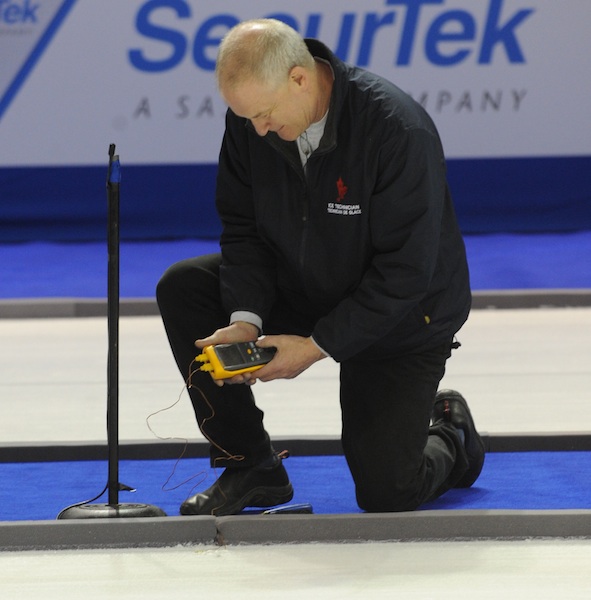Making Great Ice: Temperature tips
As Chief Ice Technician for the Canadian Curling Association, I am often asked for advice from ice makers in curling centres across the country. One of the most-asked questions is about temperatures for the building, the ice and the pebble.
Here are some temperature guidelines to get you started. You can tweak them as necessary. First, let’s address building temperature. I like to keep my building around 40 degrees Fahrenheit at the five-foot level. Remember, your airflow should be in a circular pattern around the perimeter of the building. The curlers will move the air around in the middle. Also remember that you want the building to be comfortable, but you don’t want to add extra heat load to the plant.
 Second, ice temperature. Here is where it gets tricky. Each building is unique, and rocks will react differently to different temperatures. I like to go with the “two degree” principle (and please remember, this is just a guideline). If your brine out to the rink is 18 degrees Fahrenheit, it should be coming back at 20 degrees Fahrenheit. Your pad will be 22 degrees Fahrenheit, and the surface will be 24 degrees Fahrenheit. Of course, that’s in a perfect world. The outside temperature, shed temperature, and curler heat load will all have a bearing on these numbers.
Third, pebble temperature. In a curling club, I start with a base of 90 degrees Fahrenheit and a top of 120 degrees Fahrenheit, then tweak it as required. Remember to use smaller pebble for the base and larger for the top. Which temperatures and pebble size will work best for you is something you will have to experiment with. Ice makers, remember these are all just guidelines. The best thing to do is try different temperatures, but change only one thing at a time. If it works, keep it, and move on to the next experiment. And be prepared for surprises: one day everything will be great; the next day you’ll be wondering what happened. But that’s what makes it exciting. After all, if it were easy, everyone would be an ice maker. One more thing to remember: you can walk on water – when it’s frozen!
Do you have questions for Jamie Bourassa about making or maintaining great curling ice? Send them to the editor at [email protected]
Second, ice temperature. Here is where it gets tricky. Each building is unique, and rocks will react differently to different temperatures. I like to go with the “two degree” principle (and please remember, this is just a guideline). If your brine out to the rink is 18 degrees Fahrenheit, it should be coming back at 20 degrees Fahrenheit. Your pad will be 22 degrees Fahrenheit, and the surface will be 24 degrees Fahrenheit. Of course, that’s in a perfect world. The outside temperature, shed temperature, and curler heat load will all have a bearing on these numbers.
Third, pebble temperature. In a curling club, I start with a base of 90 degrees Fahrenheit and a top of 120 degrees Fahrenheit, then tweak it as required. Remember to use smaller pebble for the base and larger for the top. Which temperatures and pebble size will work best for you is something you will have to experiment with. Ice makers, remember these are all just guidelines. The best thing to do is try different temperatures, but change only one thing at a time. If it works, keep it, and move on to the next experiment. And be prepared for surprises: one day everything will be great; the next day you’ll be wondering what happened. But that’s what makes it exciting. After all, if it were easy, everyone would be an ice maker. One more thing to remember: you can walk on water – when it’s frozen!
Do you have questions for Jamie Bourassa about making or maintaining great curling ice? Send them to the editor at [email protected]

Ice Technician Dave Merklinger checks temperatures at the 2013 WFG Continental Cup in Penticton (Photo CCA/Michael Burns)




